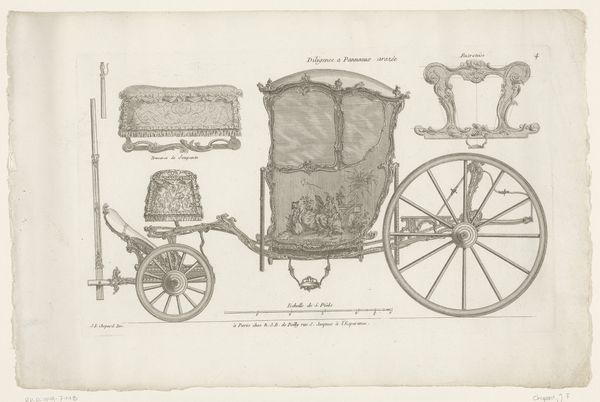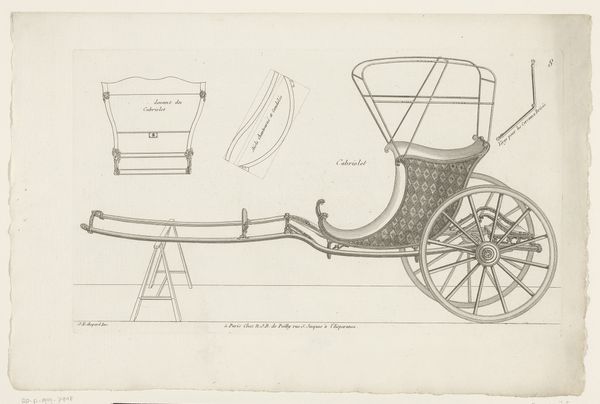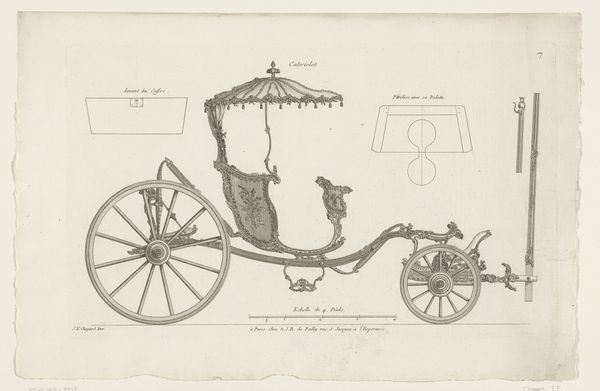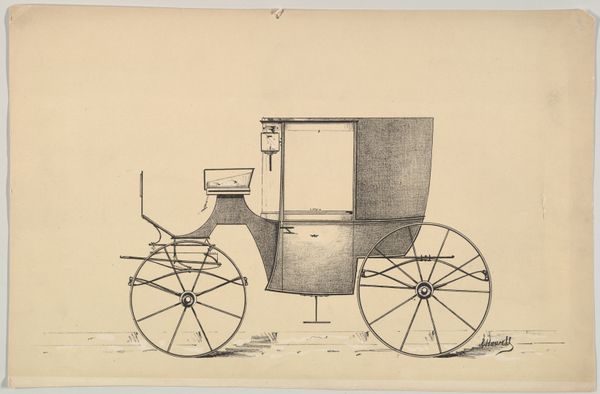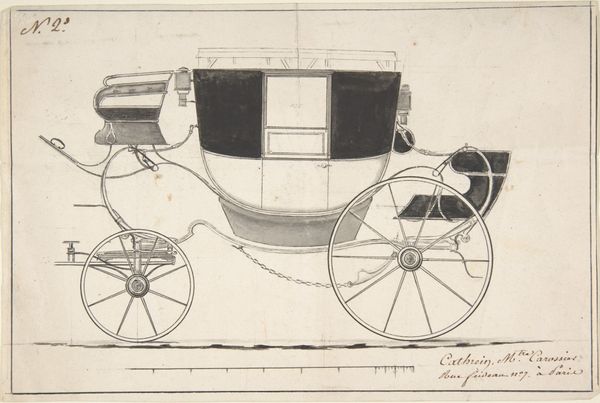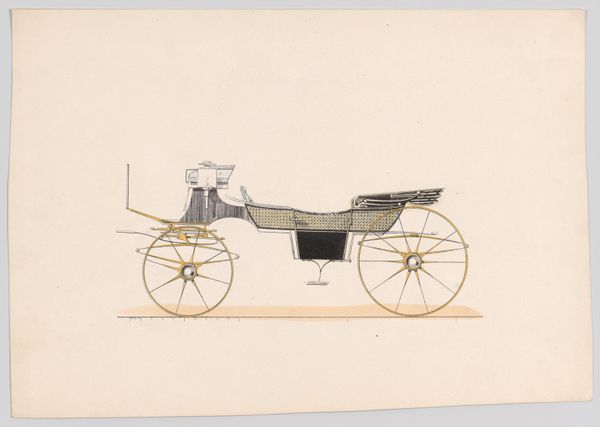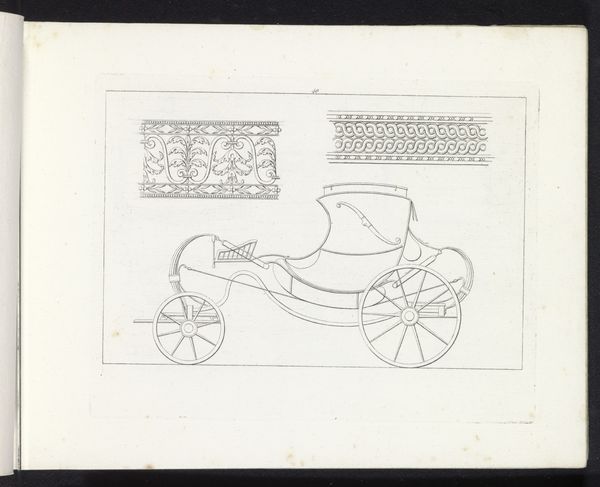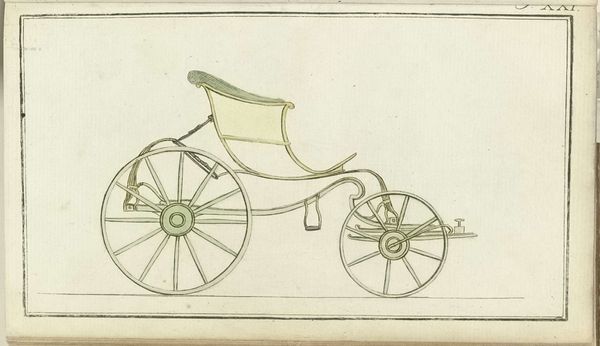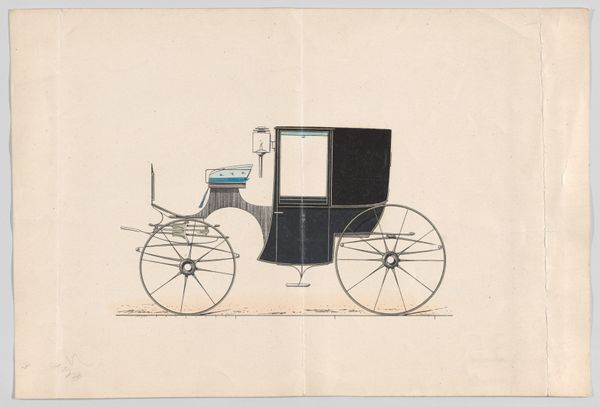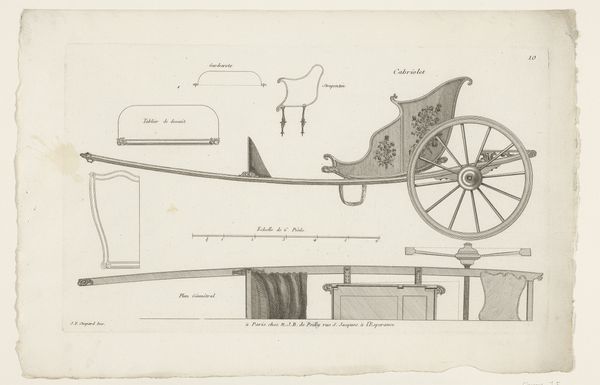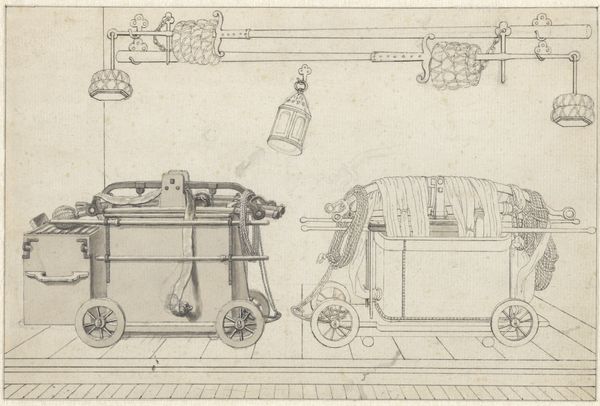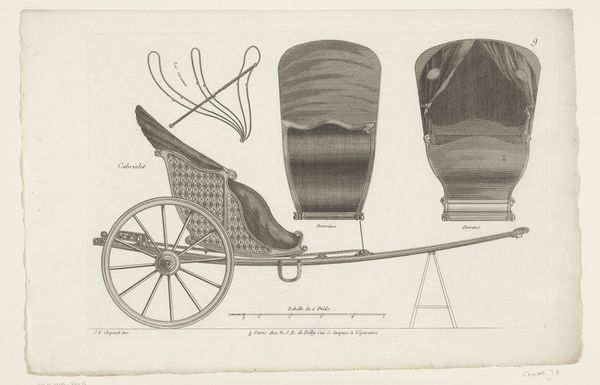
drawing, print, engraving
#
drawing
#
baroque
# print
#
old engraving style
#
geometric
#
line
#
decorative-art
#
engraving
Dimensions: height 232 mm, width 420 mm
Copyright: Rijks Museum: Open Domain
Curator: At first glance, it seems so light, ethereal, like a dream spun out of wire and lace. I see elegance defined in every curve. Editor: Let’s take a closer look. This is an engraving titled "Calèche," dating back to somewhere between 1740 and 1758. It appears to be a design or schematic. Curator: Exactly! Notice the strategic use of line and the way the artist has delineated form through intricate detail. The emphasis is on clarity and precision rather than atmospheric effect. Editor: Absolutely, that decorative-art focus. I wonder what riding in that would be like? Look at that woven seat. I imagine it's meant to signify both status and an experience—to float down cobbled streets, detached yet undeniably present. Curator: I would posit the structure reinforces aristocratic ideology by emphasizing order and control. Semiotically, the geometric structure implies social hierarchy and refinement. Editor: Or maybe just a bouncy ride and a chance to see and be seen? Isn't there also something charming about these glimpses into the past, a tangible record of imagination? Curator: Indeed, that's very insightful, that this work encapsulates that very essence: an attempt to immortalize ideas, making us witness across vast time spans the visual culture of the high Baroque era. Editor: Right, like this isn't just about an object; it's about a specific world, isn't it? Where form isn't merely function, but elaborate expressions. Curator: In conclusion, considering both the inherent structural elements and its placement within its cultural milieu allows for a thorough interpretation of its multifaceted nature. Editor: So, here's to daydreaming in carriages we'll likely never ride in, brought to life by art.
Comments
No comments
Be the first to comment and join the conversation on the ultimate creative platform.
